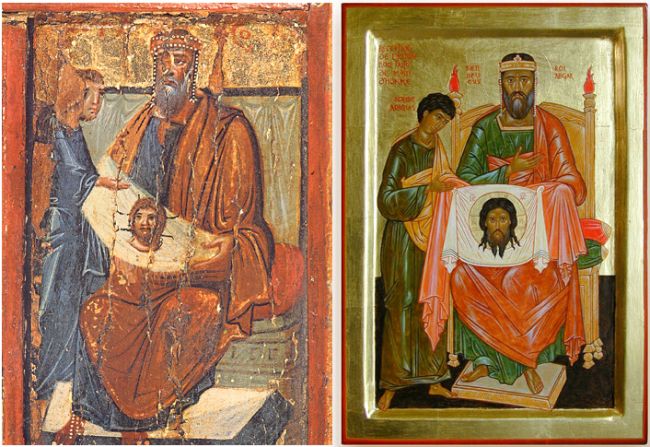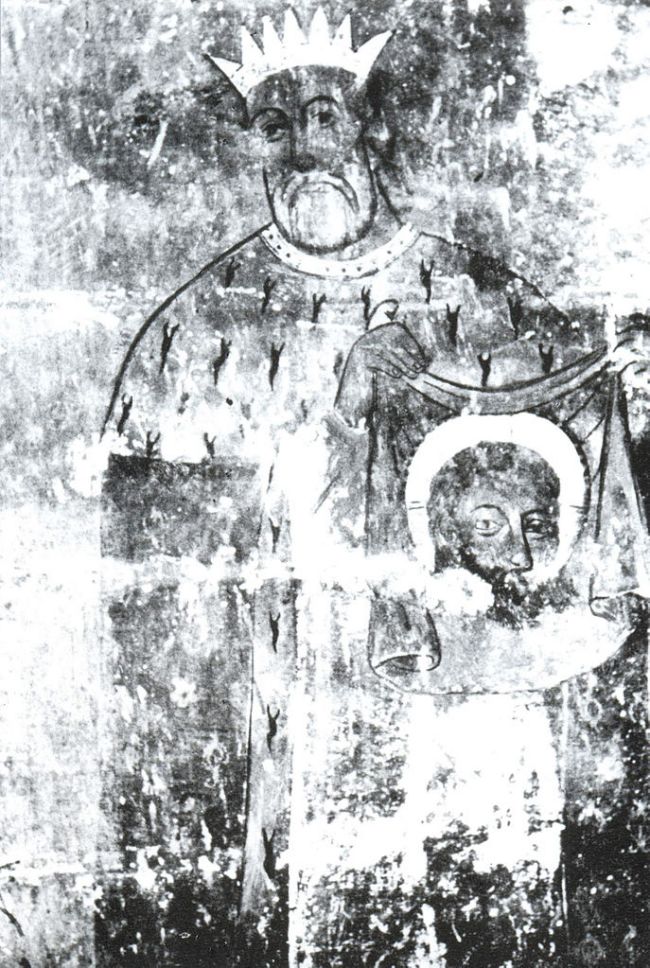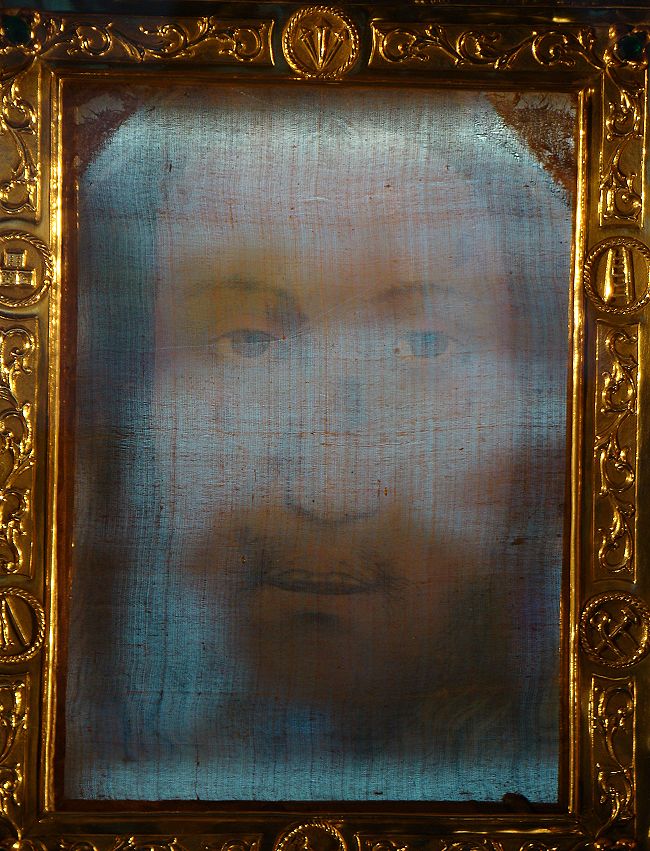|

 Abgar
V the Black or Abgarus V of Edessa was a historical Syriac ruler of the
kingdom of Osroene, holding his capital at Edessa. He ruled in from 4 BC to 7 AD
and from 13 AD to 50 AD. During the reign of Abgar IX (the 2nd or 3rd century
AD), the first Christian ruler of Edessa, a legend was coined of correspondence
exchanged between Abgar V and Jesus Christ. In his Historia Ecclesiastica
Eusebius, Bishop of Caesarea, mentions that in little known archives of Edessa
he read the letter of Abgar V written to Jesus Christ (Historia Ecclesiastica I,
xiii). According to St. Eusebius, one of the 72 post-Apostle disciples, called
Thaddeus of Edessa (there really was the first apostle from Syria whose name was
Addai), was sent by Thomas the Apostle to Edessa. Thaddeus was to heal Abgar V
and convert the Assyrians. Abgar
V the Black or Abgarus V of Edessa was a historical Syriac ruler of the
kingdom of Osroene, holding his capital at Edessa. He ruled in from 4 BC to 7 AD
and from 13 AD to 50 AD. During the reign of Abgar IX (the 2nd or 3rd century
AD), the first Christian ruler of Edessa, a legend was coined of correspondence
exchanged between Abgar V and Jesus Christ. In his Historia Ecclesiastica
Eusebius, Bishop of Caesarea, mentions that in little known archives of Edessa
he read the letter of Abgar V written to Jesus Christ (Historia Ecclesiastica I,
xiii). According to St. Eusebius, one of the 72 post-Apostle disciples, called
Thaddeus of Edessa (there really was the first apostle from Syria whose name was
Addai), was sent by Thomas the Apostle to Edessa. Thaddeus was to heal Abgar V
and convert the Assyrians.
A Syriac document, entitled Doctrine of Addai, from the turn of the 4th and 5th
centuries AD is connected with the history of correspondence exchanged between
Abgar V and Jesus Christ. In this document you may read that Ananias, the
emissary of Abgar sent to Jesus, returned to Osroene with the image of Christ.
Since the 6th century, the mention of the Saviour's image was commonly present
in the legend of correspondence exchanged between Abgar and Christ. Subsequent
versions of the legend claimed that the image was a piece of cloth (or wiper) on
which Jesus's face was miraculously imprinted. The image created in such a way
was called "the icon of icons" or the image of the Saviour not made by hand or
acheiropoietos or Mandylion. This holy object has been testified to be present
in Edessa since 6th century AD.
In the Middle Ages the story of contacts between Abgar and Christ became famous
thanks to a 10th-century text written by the emperor Constantine VII
Porphyrogenitus entitled Story of the image of Edessa. The text was written on
the occasion of translation (or transfer) of Mandylion of Edessa to
Constantinople in August 944 AD. Thanks to including the "Story..." in the
collection of texts read during the Orthodox liturgy (the so-called synaxarion
of Constantinople), the text became propagated everywhere where such liturgy was
held, which was mainly the Byzantium and the areas occupied by eastern and
southern Slavs. Apart from the "Story...", the story of Abgar was re-told or
altered in numerous written sources, such as Golden Legend by Jacobus de
Voragine.
The authenticity of correspondence exchange between Abgar V and Christ was
questioned by St. Jerome (Commentaries in Ezechiel ad 44, 29–30) and St.
Augustine (Reply to Faustus the Manichaean 28,4; On the Harmony of the
Evangelists 1, 7, 11). Under their influence, the text was rejected as
apocryphal by Pope Gelasius I's decree in the 6th century.

Emperor Romanos I Lekapenos accepts the Mandylion in Constantinople.
A miniature from the socalled Madrid manuscript of "Synopsis of Histories" by
Skylitzes
The Story of the image of Edessa is a
Greek text describing how the mandylion was created and transferred from Edessa
to Constantinople in 944. The full title could be translated as "The story of
the image of Edessa by Constantine Porphyrogenitus, a Christ-given Roman emperor.
A narrative based on various historical accounts about the holy image of Christ,
our Saviour, not made by hand and sent to Abgar; and how it was moved from
Edessa to Constantinople, the queen among cities, enjoying special prosperity".
The relic's transfer took place on 15 August 944 AD, but the
holiday falls on 16 August and has been celebrated up to this day in the
Orthodox Church.

King Abgar from St. Catherine Monastery on Mount Sinai, 10th century (on the
left);
a contemporary version by Alain Dufourcq (on the right)

Armenian king Abgar from Edessa holding the mandylion,
a 17th-century fresco from Varaga St. Gevorg Chapel

The Face by Paul Badde
|